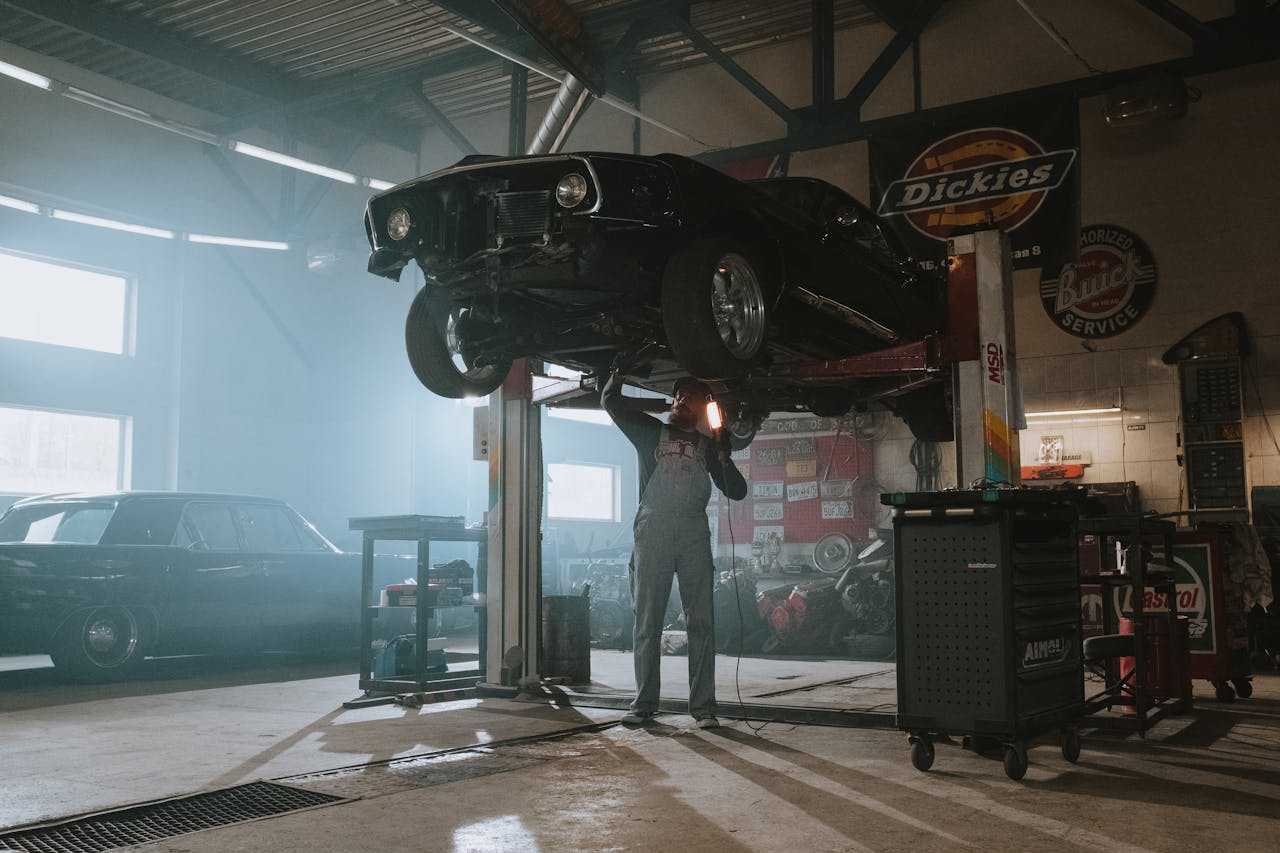Today, many car buyers are increasingly turning to used cars as a more affordable and very suitable alternative to brand-new ones. In 2022, 38.6 million used light cars were sold in the US alone. Despite this popularity, however, some car buyers struggle with the process of acquiring reliable used cars, a process that can prove quite complicated to first-time buyers.
Furthermore, buying a used car presents several advantages. However, there are many potential pitfalls and dangers associated with this, ranging from scams to buying cars with hidden faults. This is why understanding how to buy a used car is crucial before you get one. In this article, we discuss the simple steps that can guide you to choose and purchase a used car at the right price.
Setting a Car-Buying Budget
As with any other transaction, deciding how much you can spend when car shopping is a key step to buying a used car. Setting a realistic and well-thought-out car-buying budget enables you to achieve your goal of acquiring a new car without running into financial trouble. To achieve this, a delicate balance is needed between your desires and the need for financial prudence. Here are some steps you can take to set the right budget when car shopping.
Evaluate your Financial Capacity
Begin by assessing your overall financial situation. Take stock of your monthly income, existing expenses, personal finance, and any outstanding debts. This comprehensive view will help you determine a realistic budget, ensuring that your car purchase does not strain your financial stability.
Consider Used Car Expenses
Next, consider the one-time costs associated with buying a used car. This includes the purchase price, taxes, registration fees, and potential inspection or repair costs. Make allowance for extra funds to cater for unexpected expenses, as even the most well-maintained used cars may develop unexpected faults.
Furthermore, consider the long-term costs of ownership, such as auto insurance, maintenance, and fuel economy. Research the average costs associated with the specific car model you’re interested in to avoid unexpected financial costs in the future.
Consider Your Needs
While it is tempting to aim for the flashiest new car models, a realistic approach is to differentiate between needs and wants. Prioritize essential features and qualities that align with your daily requirements.
For example, how many people would you want to carry in your car? If you have a large family living with you, a vehicle with larger seating capacities would be the right car for you. Doing this not only helps you stay within budget but also ensures a more practical and satisfying driving experience.
Explore Financing Options and Car Loan
There are several financing options available for car buyers today which can be instrumental in your budget management. Evaluate your finances, interest rates, loan terms, monthly payment options, and credit score to secure a financing plan that aligns with your financial capabilities. Beware of stretching your budget too thin with auto loans that have high monthly payments or interest rates. This could lead to financial difficulties over time.
Patience and effective planning are key when planning to purchase a used car. Be sure to take the time to explore various options within your budget, leveraging online resources, dealerships, finance companies, credit unions, auto loans, and private sellers. This approach not only enhances your negotiating power but also increases the likelihood of finding a reliable used vehicle that fits seamlessly into your financial capacity.
Decide Where to Buy a Used Car

Your choice of where to buy your car can greatly impact both the process and the outcome of your used car purchase. With the right seller, you can seamlessly obtain the best car for your unique requirements. Here are some options you can pick from when deciding on where to buy your used car.
Dealerships
Dealerships offer a wide range of used motor vehicles, often with certified pre-owned options and the best deal. While prices may be slightly higher than private sellers, dealerships usually provide warranties and thorough inspections, enhancing the overall reliability of your purchase. Many brands have gained popularity for their extensive used car inventories and transparent purchasing processes.
Private Sellers
In most cases, buying from a private seller can mean you have to pay higher prices. With the right knowledge, however, you can find affordable offers. When buying from a private seller, be sure to inspect the vehicle thoroughly and obtain its complete maintenance history. You also need to take safety measures to avoid falling prey to private party scams. If you are having trouble finding suitable private sellers, you can consider trying online platforms that connect buyers with private sellers.
Online Platforms
As mentioned earlier, there are several online platforms today dedicated to used car sales. Websites like EpicVIN provide a vast range of used cars, allowing you to find your desired car by filtering search results. These platforms often include user reviews and detailed vehicle histories, which help you make informed decisions.
Auctions
If you want valuable used cars at significantly reduced prices, going to an auction is a good option to consider. However, auction buys can be quite risky as the vehicles may not undergo standard-level inspections, and the buying process can be less transparent. To be on the safe side, carry out proper prior research to ensure that you participate only in reputable used vehicle options.
Consider the Certified Pre-Owned (CPO) Program
Many car producers offer certified pre-owned (CPO) programs, which is a middle ground between dealership and private seller transactions. Certified Pre-Owned (CPO) vehicles are used cars that have undergone a thorough inspection and certification process mandated by the manufacturer or an authorized certifying authority. Here are some reasons why you should consider a CPO program.
Rigorous Inspections
Certified Pre-Owned cars undergo comprehensive, manufacturer-mandated inspections. These examinations cover various mechanical, electrical, and cosmetic aspects, ensuring that the vehicle meets stringent quality standards. For example, a CPO inspection for a brand like Lexus involves an extensive 161-point checklist.
Extended Warranties
One of the standout features of CPO programs is the inclusion of extended loans and warranties. This extra coverage, often provided by the manufacturer, goes beyond the original factory warranty, reducing concerns about potential post-purchase repairs. Buyers can enjoy the reassurance of additional protection, varying in duration and coverage specifics among different brands.
Vehicle History Reports
Transparency is very necessary in CPO car programs. Buyers can use the car's vin to get a comprehensive vehicle history report. This will outline the car’s records, including any accidents, title issues, warranty period, or odometer discrepancies.
Manufacturer Backing
Opting for a Certified Pre-Owned car means aligning with the manufacturer’s reputation for quality. Manufacturers back CPO programs, standing behind the reliability of their certified vehicles. This backing adds a layer of trust and confidence to the overall purchasing experience.
Choose the Right Car for You

There are several factors to consider when choosing a used car to ensure that you get the best car to suit your needs, taste, and requirements.
Define Your Priorities
Start by identifying your priorities. Are you looking for fuel efficiency, ample cargo space, or a sporty driving experience?
Consider Your Lifestyle
Think about your normal daily routine and how a car fits into it. Commuting long distances may call for a fuel-efficient model. Similarly, a family man will prioritize a specific vehicle with safety features and spacious interiors. An off-road-capable SUV might be the right fit for you if you intend to drive over rough ground.
Research Reliability and Reviews
Check out the reliability ratings and reviews of the models you’re interested in. For example, EpicVIN provides insights into the long-term reliability of various vehicles, helping you make an informed decision about the durability and performance of different makes and models.
Set a Realistic Budget
Your budget serves as a guiding factor. Consider not only the initial purchase price but also ongoing expenses like auto insurance, maintenance, and fuel. This holistic approach ensures that you choose a car that not only aligns with your financial capabilities upfront but remains affordable in the long run.
Test Drive Multiple Models
Hands-on experience is invaluable. Schedule test drives for the models on your shortlist to assess how well they perform on the road, the comfort of the interior, and whether the car’s features suit your preferences.
Check Maintenance Costs
Investigate the average maintenance costs associated with the specific make and model you are considering. Some cars may have higher repair costs or require specialized services, impacting the overall cost of ownership.
Resale Value
While considering the purchase, also think ahead to the eventual resale. Some models hold their value better than others, offering a better return on investment when you decide to sell or trade in the future.
Explore the Prices at the Used Cars Market

Research Market Values
Begin by researching the market values of the specific make and model you are interested in. Online resources like EpicVIN provide comprehensive information on the fair market value of used cars based on factors such as mileage, condition, and optional features.
Consider Depreciation
Recognize that cars depreciate over time. Understanding the depreciation curve of the model you intend to buy can help you gauge its current worth more accurately. Some models may retain value better than others, impacting their resale prices in the used car market.
Check Local Listings
Explore local listings on online platforms, dealerships, and classified ads to get a sense of the prices in your area. Local market conditions, demand, and supply can influence the pricing of used vehicles, so a regional perspective is crucial.
Negotiate with Confidence
Knowing fair market values, enter negotiations with confidence. Be prepared to negotiate and drive down the asking price. However, keep in mind the researched prices and any additional factors, such as the vehicle’s condition, maintenance history, and optional features.
Beware of Unusually Low Prices
Exercise caution when you are offered prices significantly below the market average. Unusually low prices may be indicative of hidden issues or potential scams. Be sure to thoroughly investigate such cases and prioritize transparency.
Factor in Additional Costs
Beyond the listed price, consider additional costs such as taxes, registration fees, and potential repair expenses, which can add to the car payments.
Timing Matters
The timing of your purchase can impact prices. For example, prices may be lower toward the end of the month or year as dealerships strive to meet sales quotas. Monitoring market trends and timing your purchase accordingly can lead to more favorable pricing.
Research Your Finance Options

Be sure to carefully evaluate your choices regarding car financing and make an informed decision. Start by exploring traditional lending institutions such as banks and credit unions.
These entities often offer competitive interest rates, especially if you have a solid credit report and don't want to pay cash. Carefully check their car loan terms. Do a comparison shop to know about their duration and monthly payments. Ensure that they align with your budgetary constraints.
Alternatively, consider some of the online platforms that assist with car financing. They have grown in popularity in recent years. These platforms often offer swift approval processes, and monthly payments, and cater to individuals with varying credit profiles.
In some cases, it is possible to secure financing directly through the dealership. Dealers often collaborate with financial institutions approved by Credit Union to provide special offers or incentives for customers. Some dealers can allow you to make a smaller down payment and monthly payment.
You can also consider taking a secured or unsecured car loan. Secured loans are backed by collateral, typically the vehicle itself, and normally carry lower interest rates. Unsecured loans, on the other hand, do not require collateral but may involve higher interest rates due to the increased risk for the lender.
There is also the possibility of utilizing lease buyouts. Lease buyouts allow you to purchase vehicles that you have been leasing, often at a pre-agreed price.
Regardless of which option you choose, it is necessary to be cautious about using an online lender with exorbitant interest rates or unfavorable conditions. Hence, only work with providers of auto loans that are certified by the credit union. If you have the means, you can simply pay cash.
Contact the Seller

Seamless and effective communication between buyer and seller is key. Here are some factors to consider in your communications with your seller.
Utilize Clear Communication Channels
Initiate contact through reputable platforms such as online classifieds, car listing websites, or used car dealer contacts. Clearly express your interest, and be specific about the vehicle you intend to purchase.
Ask Detailed Questions
Furthermore, when buying a used car, you should inquire about the car’s history, maintenance records, and reason for selling. This not only helps you assess the vehicle’s condition but also helps you judge the seller’s transparency.
Arrange a Meeting in a Safe Location
When scheduling a meeting with the seller, choose a well-lit and public place, such as a parking lot or a designated meeting spot. For safety purposes, avoid meeting in secluded areas.
Verify Seller’s Identity
Before meeting, verify the seller’s identity by asking for their full name and contact information. A legitimate seller will readily share this information.
Be Wary of Red Flags
Watch for warning signs such as reluctance to provide information, inconsistent details about the car, or requests for unusual payment methods. Exercise caution and trust your instincts.
Bring a Friend or Family Member
Enhance personal safety by bringing a friend or family member to the meeting. Having a second opinion can be valuable during negotiations and enhance security.
Test Drive with Caution
When test-driving the vehicle, choose a route that includes various road conditions. Pay close attention to any unusual sounds or handling issues.
Study a Vehicle History Report
A Vehicle History Report (VHR) offers invaluable insights into its past and potential future. Be sure to do the following when buying a used car.
Obtain a Detailed Vehicle Identification Number (VIN)
Start by obtaining the Vehicle Identification Number (VIN) from the seller. This unique code gives you access to the vehicle history reports, giving you crucial information about its past incidents and ownership.
Use Reliable VHR Sources
Obtain the VHR from reputable sources such as trusted online services like EpicVIN or the National Motor Vehicle Title Information System (NMVTIS). These platforms compile data from various sources, providing a comprehensive overview of the vehicle’s background.
Check For Accidents and Damage
Carefully analyze the VHR for any reported accidents, damages, or title issues.
Verify Odometer Reading
Check for discrepancies in odometer readings to ensure the mileage is accurate. An unreliable odometer reading can lead to wrong information about the vehicle’s wear and tear, which affects its overall value.
Check Ownership History
Examine the report for details about the vehicle’s ownership history. Multiple owners within a short timeframe may indicate a potential issue. Conversely, single ownership over long periods can be a sign that the car is properly maintained and cared for. You want to ensure that you buy a car free of issues.
Open Recalls and Title Information
Identify any open recalls and review title information. A clear title is crucial for a hassle-free ownership transfer.
Read the Report
Take the time to read and understand each section of the vehicle history report thoroughly. Do not hesitate to seek clarification from professionals if and when needed.
Test Drive the Car

Going on a test drive allows buyers of pre-owned vehicles to assess the vehicle’s performance and fuel economy firsthand. These are some factors to consider when going on a test drive.
Schedule the Test Drive in Daylight
Also, before the car purchase, opt for a tryout drive during daylight hours to have a clear view of the car’s exterior and interior details. Adequate lighting enhances visibility, aiding in the detection of potential issues.
Choose a Familiar Route
Select a test drive route that includes a mix of road conditions, allowing you to evaluate the car’s performance in various scenarios. Going on familiar routes helps in assessing how the vehicle handles typical driving situations. In addition, observe the necessary highway safety rules during your test drive.
Verify the Seller’s Identity Again
Before initiating the test drive, reconfirm the seller’s identity and share your whereabouts with a friend or family member.
Inspect the Vehicle Exterior
Conduct a thorough visual inspection of the exterior before the test drive. Look for signs of damage or inconsistencies that might not be immediately apparent in photographs.
Document the Test Drive
Consider documenting the test drive through photographs or videos, with the seller’s consent. This not only provides a record of your experience but can be helpful in case of any disputes or uncertainties later on. Also, take mental notes of how the steering wheel responds or feels during your test drive.
Test All Essential Functions
During the test drive, try crucial functions such as brakes, acceleration, steering responsiveness, and the operation of lights and indicators. Pay attention to any unusual noises or vibrations to avoid costly repairs.
Test Drive Security Measures
Implement security measures during the test drive, such as keeping your mobile phone within reach, ensuring the doors are functioning properly, and avoiding unfamiliar or isolated areas. Trust your instincts and be cautious.
Have a Professional Inspection Plan
If possible, consider arranging for a professional mechanic to inspect the car before buying from the dealer or private party seller. Their expertise can uncover potential issues that may not be apparent during a standard test drive, providing a better standard of evaluation.
Get a Car Inspection

Getting a professional pre-purchase inspection is a crucial step when buying a used car. Here are some factors to consider when getting an inspection.
Select a Trusted Mechanic
Choose a reputable and independent mechanic to conduct the inspection. An unbiased professional can provide an objective assessment of the car’s condition, offering insights that may not be apparent to the untrained eye.
Be Comprehensive
Ensure the pre-purchase inspection covers every aspect of the car, including the engine, transmission, suspension, brakes, and other essential components.
Check for Structural Integrity
Examine the car’s structural integrity, looking for signs of previous accidents or repairs. A thorough inspection of the frame and chassis is crucial to ensure the vehicle’s safety and longevity.
Evaluate Fluids and Leaks
Assess the levels and condition of fluids, including oil, coolant, brake fluid, and transmission fluid. Additionally, check for any leaks under the vehicle, as they could indicate underlying problems.
Electrical System Assessment
Verify the functionality of the electrical system, including lights, indicators, wipers, and the vehicle’s entertainment system. Electrical issues can be complex, and a detailed inspection helps identify potential problems. You should also inspect the car's air conditioning unit.
Tire and Brake Inspection
Inspect the tires for wear and ensure they have even tread. Assess the condition of the brakes, including brake pads, discs, and the braking system as a whole. Adequate braking performance is essential for safety.
Review Previous Maintenance Records
If available, review the car’s maintenance records. A well-documented history can provide insights into how well the vehicle has been cared for and alert you to any overdue maintenance or upcoming service needs.
Negotiate Based on Inspection Findings
Use the inspection results as a basis for negotiations. If the inspection reveals issues, discuss with the seller to determine if they are willing to address the concerns or adjust the selling price accordingly.
Negotiate the Best Price

Effectively negotiating the best price for a used car allows you to secure a deal that aligns with your budget and expectations. Here are some essential tips to help you in doing this.
Do Your Research
Before entering negotiations, gather information about the car’s market value, taking into account factors like make, model, mileage, and condition. Some websites, such as EpicVIN, can provide valuable insights into used car pricing.
Set a Realistic Budget
Establish a maximum budget for the used car, including taxes, registration, and potential repairs.
Inspect the Car Thoroughly
Identify any existing issues or potential maintenance needs. This information can be used as leverage during negotiations, allowing you to request a lower price based on necessary repairs. Hence, get the car inspected by an expert.
Timing Matters
Choose the right time to negotiate. Sellers may be more flexible towards the end of the month or during slow sales periods when they are eager to meet quotas.
Express Genuine Interest
Sellers are more likely to negotiate with individuals who demonstrate a sincere interest in the vehicle. Ask questions about the car’s history and express your enthusiasm.
Be Patient and Polite
Approach negotiations with patience and politeness. A cooperative and respectful attitude can foster a positive relationship with the seller, potentially leading to a more favorable deal.
Haggling Tips
Start Below Your Budget: Begin negotiations with an offer below your maximum budget, leaving room for counteroffers.
Be Prepared to Walk Away: If the seller is not willing to meet your price, be ready to walk away. This can prompt them to reconsider and potentially make a more favorable offer.
Use Comparable Listings: Reference other similar listings in the area to support your proposed price, showing that your offer is fair and competitive.
Complete the Paperwork
Once you have successfully negotiated the price for your used car, the next critical step is completing the necessary paperwork. This phase ensures a smooth and legally sound transfer of ownership.
Bill of Sale
Draft or obtain a bill of sale. This document (sales contract) outlines the details of the transaction, including the agreed-upon price, vehicle identification number (VIN), and the names and addresses of both the buyer and seller. Signatures from both parties validate the sale.
Vehicle History Report
Request and review the vehicle history report. This report provides essential information about the car’s past, including accidents, title issues, and odometer readings. It is crucial for transparency and helps you make an informed decision.
Title Transfer
Ensure the seller has a clear title to transfer. The car's title is a legal document proving ownership. Both parties must sign the title, and in some cases, a notary may be required. Check your state’s specific requirements for title transfers.
Odometer Disclosure Statement
Insist on an odometer disclosure statement, confirming the accuracy of the mileage. This is a legal requirement to prevent odometer fraud and ensures that you are aware of the car’s true usage.
Vehicle Inspection and Emissions Certificates
Depending on your location, you may need to obtain a vehicle inspection or emissions certificate. Ensure the car meets the necessary standards for safety and environmental regulations.
Insurance
Arrange car insurance coverage before driving the car off the lot. Contact your insurance company to add the new vehicle to your policy, ensuring you are legally protected from the moment you take ownership.
Payment Confirmation
Confirm the payment method and ensure the seller provides a receipt or proof of payment. Be thorough, follow legal requirements, and keep copies of all documents for your records. This ensures a seamless transition of ownership and protects you from potential issues later on.
Consider Warranties and Insurance
It is essential to think beyond the initial transaction and consider long-term protection through warranties and insurance. Here’s a guide on how to carry out this process.
Purchase an Extended Warranty Coverage
Explore the option of purchasing an extended warranty for your used car. While many used cars are sold “as-is,” some used car dealers, private party sellers, or third-party providers offer extended monthly payments and warranty coverage that cover certain repairs and components after the manufacturer’s warranty expires. Assess the coverage and weigh the cost against potential future repair expenses.
Certified Pre-Owned (CPO) Programs
If buying from a used car dealer, inquire about Certified Pre-Owned programs. These programs often include long-term warranties, thorough vehicle inspections, and additional perks, providing extra assurance about the car’s condition.
Insurance Coverage
Review your car insurance options and select coverage that suits your needs. In addition to liability insurance, consider comprehensive and collision coverage to protect against damage to your vehicle. Evaluate deductibles and policy limits to ensure adequate protection.
Gap Insurance
Assess the need for gap insurance, especially if financing the purchase. Gap insurance covers the difference between the car’s market value and the remaining balance on your auto loan in case of theft or a total loss. It prevents you from being financially responsible for the gap between the insurance payout and the outstanding loan amount.
Shop Around for Insurance Quotes
Obtain quotes from multiple insurance institutes to secure the best rates. Factors such as your driving history, location, and the type of car you are insuring can influence premiums. Comparing quotes helps you find a balance between cost and coverage.
Understand Policy Terms
Thoroughly understand the terms and conditions of your insurance policy. Be aware of coverage limits, deductibles, and any exclusions. Clear communication with your insurance provider ensures you have a comprehensive understanding of your policy.
Maintain Regular Maintenance
Adhere to the manufacturer’s recommended maintenance schedule. Regular maintenance not only keeps your car in good condition but also supports insurance claims in case of unforeseen events. Failure to maintain the vehicle properly may affect coverage.
Conclusion
Buying a used car calls for proper planning and cautiousness. Although there are many transparent dealerships, private owners, and sellers in the used car market. However, there are also several scammers and dupes. With the right information, it is possible to save money, and stress, and achieve your goals of purchasing a used car while avoiding these issues.
Frequently Asked Questions
The best time to buy a used car is often at the end of the month when dealerships are looking to meet sales quotas. Additionally, most people tend to buy newer car models at the end of the year, from October to December. This means dealerships often offer discounts on older inventory at these times.
Used car prices can fluctuate based on various factors, including market demand, supply, and economic conditions. While prices can vary, it is advisable to monitor the market and be strategic about your purchase timing.
Buying a used car can be a wise investment as they typically depreciate at a slower rate than new cars. With careful research and inspection, you can find reliable used vehicles at a fraction of the cost.







